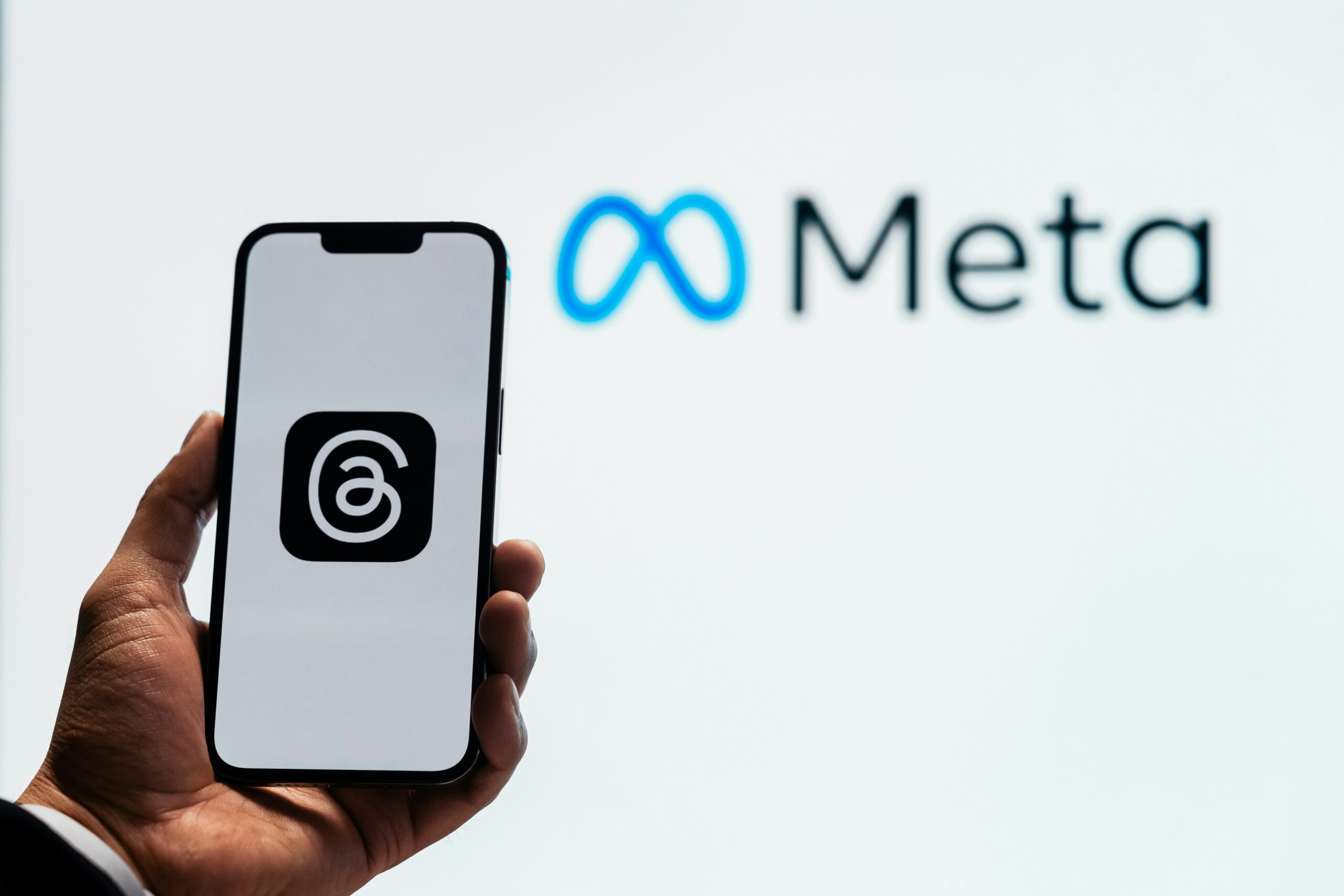

Popular social media platform X has experienced rapid changes over the last few years. In its current state, it’s almost unrecognisable from its 2006 launch as Twitter. With recent leadership changes, social media experts have pointed out that they’re rolling out a series of changes that seem to confuse one another.
While the CEO is currently describing the platform as video first, extending the length of videos to 5 hours, Elon Musk is discussing bringing email features to the platform, and they’ve rolled out voice and video calls for non-premium members.
The social platform has become inaccessible to many marketers as advertisers are pulling out, analytics are becoming harder to gather, and users flock to alternatives. So what’s the future for X – what are they doing now? Are they experiencing a personality crisis?
At Punch, we know social media. Our marketing team is packed with social media experts who live and breathe the stuff, regularly keeping up to date with changes to the platform. Our social media executive, Georgie Wood, feels social media is of key importance because of its ability to connect us to one another. It’s one of the reasons that Twitter was so beloved at first, and it’s one of the issues with the platform now. As hate speech infiltrated the site and the concept of ‘fake news’ spread, it’s now best known for the argumentative nature of its user base, helping to spread and deepen community divisions.

The history of X
When Twitter launched in 2006, no one could have expected the microblogging platform to completely dominate the internet in the way it has since. The platform initially existed purely for users to share their thoughts and opinions in 140 characters or less. Images could be posted but there were very few features on the site, allowing people to niche down, form connections, and embrace the blogging aspect of Twitter. Since then, however, it’s grown to a social media platform that publishes videos, enables video and voice calling, and is used to share major breaking news, craft interactive content, and even play a role in politics. It’s big news, basically.
But the current state of Twitter (sorry, X!), is a cause for concern for many within the tech industry. Since the acquisition by tycoon Elon Musk in 2022, the platform has not only unveiled a name change but has rebranded entirely, offering features that have become synonymous with other major players in the industry. With a sleek, technological look and the ability to connect socially like never before, what still remains of the beloved platform? And with more changes than a teenager going through a rebellious stage – “It’s not a phase, mom” – is X having a personality crisis?
Looking back over the history of X it’s hard to pinpoint exactly when things started to change. Could it have been the changes in leadership, competition from other social networks like Instagram, or purely a need to grow and dominate that led to its downfall?
In 2006, Twitter was launched by Jack Dorsey, Evan Williams, Biz Stone, and Noah Glass. The entrepreneurs had previously worked at Google and created Blogger, meaning they had the experience to handle such a project. The iconic first Tweet sent out into the world was from engineer Jack Dorsey who suggested the name ‘twttr’. The initial post read “just setting up my twttr”. This phrase would go on to spawn an entirely new lexicon that would then inspire similar ventures to try to coin their terms – none of which would ever be as successful. In fact, the Merriam-Webster Dictionary officially recognised ‘Tweet’ as both a verb and a noun in 2011, with the Oxford English Dictionary shortly following suit.
The tech community quickly embraced Twitter and soon even celebrities were paying attention to the platform. Ashton Kutcher wrote about Williams and Stone as part of the Time Magazine 100 issue after becoming the first person to reach a million followers on Twitter in 2009.
How X Developed with the Times
Initially, Twitter offered users a chance to take a peek into the everyday lives and thoughts of their friends, influential people in their industry, and celebrities. However, they became aware of the importance of the political potential of the site in the early 2010s. Former president of the United States of America, Barack Obama, became the first political leader to first declare victory publicly via social media upon winning the 2012 U.S. presidential election. This tweet was viewed 25 million times on Twitter alone.
Founder of SpaceX and at the time, the world’s richest man, Elon Musk initiated the acquisition of Twitter in April 2022, finally concluding the sale in October of the same year. He paid $44 billion for the social platform, replacing the existing CEO Parag Agrawal. Shortly following this acquisition (which was big news, already), Musk started mass layoffs which resulted in many of Twitter’s former employees speaking out against the company.
Then came the changes. Big changes. Twitter Blue was introduced – a paid subscription service for the platform. For just $8 a month, you received a blue checkmark next to your name, replacing the old form of verification (although some key figures were still able to retain theirs, other notable celebrities gave theirs up in protest of this development). But unlike the old style verification, which required no identity checks, meaning imposter accounts became rife.
Rebranding, ahoy. This was a big moment in the legacy of the microblogging site. Musk rebranded Twitter as ‘X’, replacing the iconic bird logo with a stylised X. Despite the historic nature of the verb’s (Tweet) inclusion in both formal and informal language, Musk decided to retreat from the momentous public welcoming of the site with his name change. No longer would people ‘tweet’ their thoughts. Just like Facebook, they’d be posting now. The terminology and function of the site that set it apart from other platforms were slowly being eroded. Musk wanted X to be an ‘everything’ app.

Recent Issues with X
December 2023 saw massive outages internationally. Nearly 100,000 users reported that the platform was down in one of the biggest outages in the platform’s history. TweetDeck which had just been rebranded to Xpro and allowed users to schedule posts and view analytics was also down during this time. The shocking thing for many users was that there was no immediate comment from the site, nor any explanation of why it had happened in the first place.
In February 2024 X rolled out voice and video calling to everyone on the platform. At the end of 2023 and the beginning of 2024, certain features were only available to people who paid for X premium. It set up a system in which those who were willing to pay to utilise the platform for the full experience, got more out of it and dominated feeds. They could use the platform as a messaging service, a way to advertise, share their thoughts, and even post longer-form content as they were no longer constrained to a shorter character limit. It was fully go big or go home, with those still limited to the free service, finding the platform no longer served them.
Voice and video calling being rolled out to all users seemed at first like a great turning point after the recent news alienated the user base. But pretty soon, more contradictory and disturbing news was revealed. It turned out the system reveals each user’s IP address when they make a call which is a major privacy concern. This is especially confusing when former CEO Elon Musk has been incredibly outspoken about the need for digital privacy and safety.
Several marginalised groups have been particularly vocal on the changes to X since Musk’s acquisition, including the LGBTQ community who have been affected by these rules. In April 2023 Twitter edited its abuse and harassment policy to no longer explicitly ban deadnaming. In April 2024, Twitter removed all instances related to pronouns from its code.
Retreats and reflection
One of the largest issues with X at the moment is a lack of consistency. Community Notes once allowed users to verify the legitimacy of claims being made. This means they could tackle the issue of fake news. However, as of April 2024, the way Community Notes functions is set to change once again. The update means accounts whose Community Notes receive Not Helpful ratings from users with a variety of points of view would risk losing their ability to leave Community Notes. Not Helpful votes are cast by X users separately from moderators, meaning that a coordinated voting effort could ban those trying to ensure fair news reporting or fight against fake news, completely contradicting the intended purpose of the feature.

Alternatives to X
Since Musk acquired X and the changes that have been rolled out, alienating its user base, we’ve seen competitors popping up. While you might be tricked into thinking that X’s biggest competitors are the rest of the top social media platforms (like Instagram, Pinterest, Facebook, TikTok, and Snapchat), as a microblogging platform, X used to lie within its own niche. Its ability to be a primarily text-based platform separated it from Instagram in the same way its primary focus of posting as opposed to direct messaging meant it set itself apart from Snapchat.
So who are these new competitors?
BlueSky
BlueSky was initially launched in 2021 as an invite-only microblogging platform. X co-founder Jack Dorsey sits on the board of directors, lending the site credibility in the eyes of those looking for an alternative. It became publicly available on February 6th 2024. This exclusivity was great in many ways as it meant it could beta test the site before the official launch. However, the limited user base means there wasn’t much content to keep people engaged and active on the site. Fewer people equals fewer posts to engage with. Fewer posts mean less time spent on the site. Less time on the site means less success for the platform. That’s not a super promising look.
But BlueSky does offer something new and different and it’s not trying to confuse its purpose in the same way X has. Its slogan shouts that ‘social media used to be fun. Be your unique self and create with your friends, all while keeping tabs on what’s happening on a global scale.’ Sound a little familiar? It does what Twitter does – lets you post short sections of text and provides a platform for journalists and influential people to share news, keeping the users informed. For marketers it offers much of the same promise as X, but to fewer eyes which presents a problem.
The platform doesn’t have all the same tools as Twitter (like direct messaging) meaning interaction solely happens through posts, harkening back to the old age of X. But what it does offer is a better user experience – and not in its layout of web design. Those who have been converted over from X have said they find the site ‘less mean’. The ability to moderate content for yourself, means you see only what you want to see. Don’t want to get involved in arguments about who deserves human rights? Just choose to hide content like ‘political hate groups’. Even more important is the fact its base is composed of people who have left Twitter, largely because of the proliferation of hate speech on the platform.
But it remains uncertain as to whether BlueSky remains a serious contender to X in the microblogging sphere. It’s specific and niche about what it attempts to do, so maybe that’s not even the aim of the project. For now, it’s a haven with promise, but without more users and content, it doesn’t look like it stands a lasting chance.
Mastodon
Even before the major controversy around X’s political bias and the spread of misinformation, the largest decentralised social network mastodon was establishing itself as a completely unique space in the digital sphere. Mastodon has many smaller servers. It’s a decentralised social network that’s been developed by a non-profit organisation so if you’re leaving Twitter due to your moral obligations, it might be a great choice of where to head next.
While Twitter has been pushing the ‘For You’ tab, showcasing posts by people you don’t follow, mastodon remains strong by allowing users to build their own timelines and remain in control of the content they see. Each server is in charge of its own moderation, making it entirely flexible and allowing you to be in the driver’s seat at all times. However, for marketers, this means that unless people are choosing to follow your brand, or unless a prominent figure is willing to represent you, no one will see your organic promotion.
What’s possibly the most interesting part of Mastaon as a social media platform is that there’s no algorithm. Instead, the feed is chronological and you only see posts from the people you follow in the servers you join. So liking a post doesn’t have an impact on its boosting, but instead, your engagement is purely to engage and show the poster that you appreciate their contribution to the topic. It’s genuine, and authentic, and helps build actual conversations and community.
However, in many ways, it’s so different from X that it’s impossible to call it a genuine alternative. It’s reminiscent of Tumblr in many ways, without large-scale influencers and profit to be made from the site. There’s no incentive or urgency for growth. Its punctuality is limited and for many new users, it can be confusing to learn to grapple with it properly. The potentially biggest problem though is something that is also a draw for many users. It’s local moderation that is placed in the hands of users means that it’s a hive for harmful images and predatory content. One study from Stanford found 112 matches of known child sexual abuse material over two days, with almost 2,000 using common hashtags related to abusive material.
The problem with moderation is not unique to either X or Mastodon but it’s one of the reasons it would be a far cry to label it a genuine alternative to X. If you’re seeking a community instead of an audience, definitely consider Mastodon – meaning marketers, this might not be for you.

Threads
A recent New York Times article ‘Advertisers Pay Attention as Meta’s Twitter Rival Surges’ discussed the potential of Meta’s new ‘public conversations app’. Launched in July 2024, the technology giant’s new social network, Threads, pulled in more than 10 million sign-ups within hours of making its debut. But anecdotal evidence would suggest people aren’t fully embracing the Twitter alternative. Many users have flocked from the app or have voiced their feelings about its pointlessness. Meta has a history of creating apps that work in conjunction with or are integrated with Instagram, just to abandon them – look at IGTV. Perhaps this will follow or a similar suit. Perhaps it’ll stick. Right now, no one is sure.
At the moment while it offers many of the same features as X, it remains slightly less accessible as users can only log in if they have a pre-existing Instagram account. Additionally, some of the functionality is lost on a desktop, meaning that laptop lovers will get less from it than they would from X.
As it stands formal paid advertising isn’t currently available on the platform but it’s set for release during 2024. That means for marketers, the best way to utilise Threads is through influencer marketing, meaning once again, it’s not yet set up to be a successor to the social giant. Your best bet would be to jump on the app now. Establish a community. Some sites are describing it as a platform on the rise so maybe it’s time to take this new kid on the block seriously.
The Future of X
The leadership changes have caused conflicting interests and it seems that there’s a competing viewpoint at the very heart of the platform. Twitter started as an authentic way for people to share their thoughts and opinions. It was light-hearted, honest, and connected with people. Over the years changes have caused it to become a decisive platform that separates the public, spreads misinformation, and creates a hierarchy so information is shared and spread only by those with the power and wealth to do so. Now there seems to be a movement to move the microblogging platform more in line with its meta competitors. With video calling it stands to aim to take over as a primary messaging platform from Instagram, and with long-form video content, it seems like it’s moving from microblogging to vlogging to fight back against the power of YouTube.
Without a clear and divisive direction from one primary leadership team, it seems like these changes will continue to be deployed and reverted over and over until the platform no longer resembles its initial intentions in 2006. Despite Musk’s departure from the position of CEO, the quest to become an ‘everything’ app continues, despite harm to its reputation.
Brands, marketers, and general users alike are starting to look for alternatives and seek out other ways to ensure their visibility on the internet. At Punch, we’re paying close attention to developments and always seeking ways to ensure we’re not getting left behind on a stagnant platform.



Share this on: